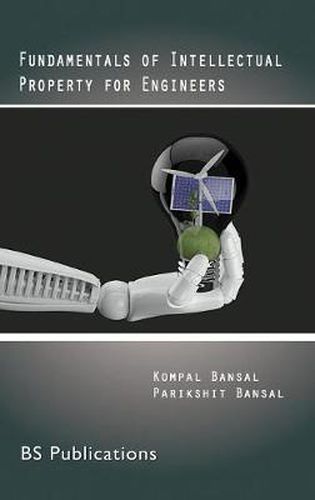Readings Newsletter
Become a Readings Member to make your shopping experience even easier.
Sign in or sign up for free!
You’re not far away from qualifying for FREE standard shipping within Australia
You’ve qualified for FREE standard shipping within Australia
The cart is loading…






This title is printed to order. This book may have been self-published. If so, we cannot guarantee the quality of the content. In the main most books will have gone through the editing process however some may not. We therefore suggest that you be aware of this before ordering this book. If in doubt check either the author or publisher’s details as we are unable to accept any returns unless they are faulty. Please contact us if you have any questions.
One does not have to be a mechanical engineer to drive a car. Similarly, for engineers, there is no requirement of a legal background to study and apply the concepts of intellectual property. What exactly is intellectual property or IP? Intellectual Property (IP) refers to creations of the mind or ‘intellect’ having commercial value and which can be bought and sold just like physical property. Legal rights associated with ‘intellectual property’ are called ‘intellectual property rights’ (IPRs).
Though largely confined to and taught in law schools, the subject of ‘intellectual property rights’ is equally important for engineers. It teaches them how ‘ideas’ can be converted to ‘wealth’, how new career opportunities can be tapped and how ‘intellectual capital’ can also be used to create their own companies apart from ‘physical capital’. IP opens new opportunities in consultancy for engineering professionals. Though the subject of IP may be common to both law schools and engineers, the focus and treatment of the subject for both cannot be same. It has to be different because while litigation and enforcement issues are important for a law student, practical aspects related to protection of ideas, innovations and also usefulness of knowledge of IPRs in professional careers are of importance for engineers. This book has been written specially for engineers. It strives to address their needs relating to important aspects of intellectual property, which can play a critical role not only in their professional development but also in the better application of their ‘intellect’ in the larger interests of society.
This book shows you how to:
-Identify whether your innovative ideas have commercial value and which IP mechanism is suitable to protect them
-Protect your ideas by filing a patent in India or abroad
-Identify powerful new career opportunities in the area of intellectual property for engineers
-Know about importance of international treaties and organizations such as TRIPS, Berne Convention, Hague Declaration, PCT, WTO, WIPO, etc. for engineers
-Improve the overall quality and impact of your research projects
$9.00 standard shipping within Australia
FREE standard shipping within Australia for orders over $100.00
Express & International shipping calculated at checkout
This title is printed to order. This book may have been self-published. If so, we cannot guarantee the quality of the content. In the main most books will have gone through the editing process however some may not. We therefore suggest that you be aware of this before ordering this book. If in doubt check either the author or publisher’s details as we are unable to accept any returns unless they are faulty. Please contact us if you have any questions.
One does not have to be a mechanical engineer to drive a car. Similarly, for engineers, there is no requirement of a legal background to study and apply the concepts of intellectual property. What exactly is intellectual property or IP? Intellectual Property (IP) refers to creations of the mind or ‘intellect’ having commercial value and which can be bought and sold just like physical property. Legal rights associated with ‘intellectual property’ are called ‘intellectual property rights’ (IPRs).
Though largely confined to and taught in law schools, the subject of ‘intellectual property rights’ is equally important for engineers. It teaches them how ‘ideas’ can be converted to ‘wealth’, how new career opportunities can be tapped and how ‘intellectual capital’ can also be used to create their own companies apart from ‘physical capital’. IP opens new opportunities in consultancy for engineering professionals. Though the subject of IP may be common to both law schools and engineers, the focus and treatment of the subject for both cannot be same. It has to be different because while litigation and enforcement issues are important for a law student, practical aspects related to protection of ideas, innovations and also usefulness of knowledge of IPRs in professional careers are of importance for engineers. This book has been written specially for engineers. It strives to address their needs relating to important aspects of intellectual property, which can play a critical role not only in their professional development but also in the better application of their ‘intellect’ in the larger interests of society.
This book shows you how to:
-Identify whether your innovative ideas have commercial value and which IP mechanism is suitable to protect them
-Protect your ideas by filing a patent in India or abroad
-Identify powerful new career opportunities in the area of intellectual property for engineers
-Know about importance of international treaties and organizations such as TRIPS, Berne Convention, Hague Declaration, PCT, WTO, WIPO, etc. for engineers
-Improve the overall quality and impact of your research projects